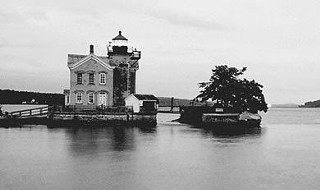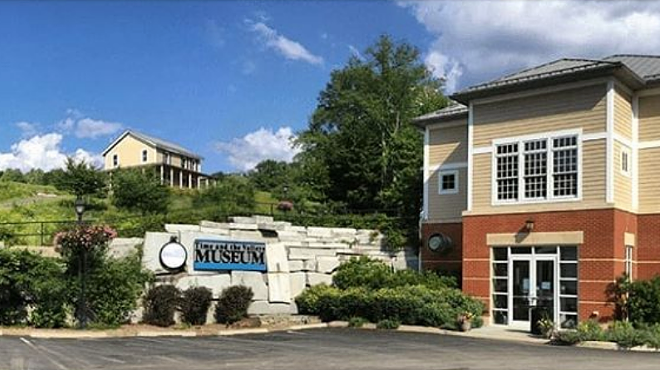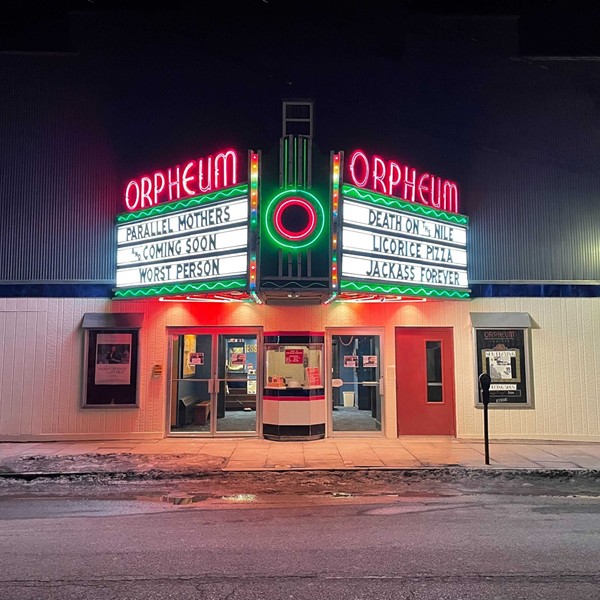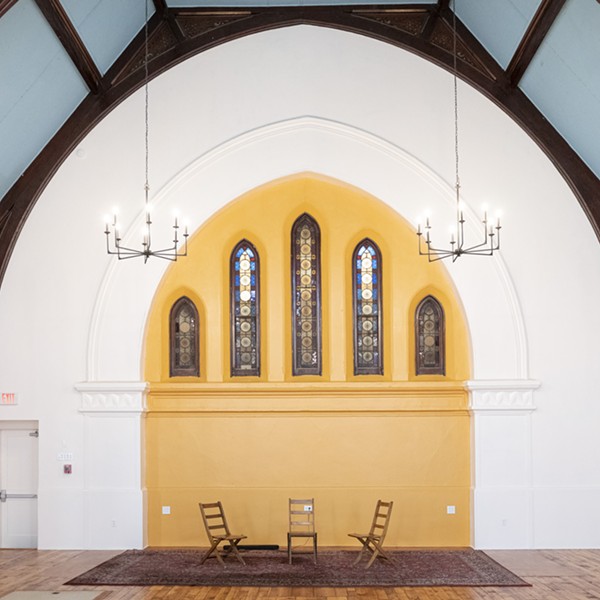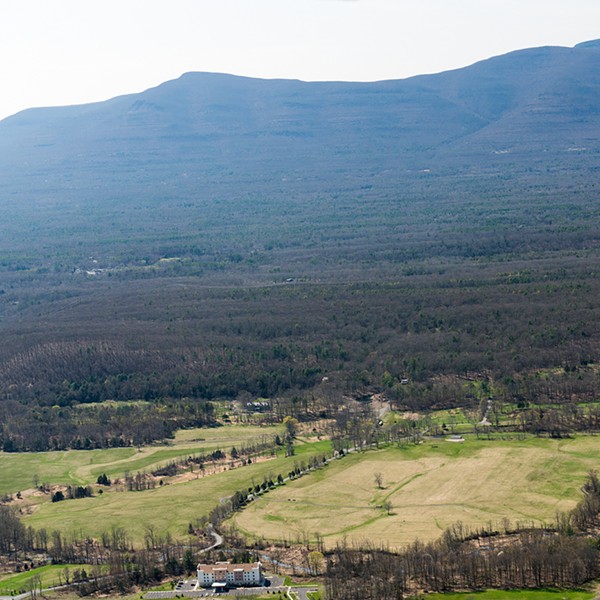Romantic notions of the job aside, lighthouse keeper Allen Emersonn knows that running a lighthouse makes for a full and challenging life, whether the lighthouse is a guiding beacon or - as in the case of the 19th-century Saugerties Lighthouse - a historic museum and bed and breakfast. With a barge and a half-mile nature trail his only connections to the so-called real world, Emersonn admits that living "entirely surrounded by water" sometimes makes him feel "not grounded," yet keeps him ever "astounded."
And who wouldn't be? Emersonn's anecdotes alone convey the sense of wonder that life on the water inspires. Like that "spooky" night last fall when he and several overnight guests outside the front door suddenly noticed "an enormous shooting star that burned up within a half mile of us, shootin' sparks, giving off smoke, hissin' and poppin' kind of slow, like a flare in your face, like a big sparkler. Shooting stars are exciting in themselves, but over the water? Never seen anything like it, and never will again." Like when the Hudson freezes over completely and the trail gets thick and slippery with ice, "and you're the keeper, and you just can't afford to slip and fall." Then when the ice starts thinning at the end of winter, all day and all night "you can hear it crack and zing, and you can hear the crack run all up and down the river." Or it's another cold night like any other and, heading back from doing errands "on the mainland," Emersonn realizes, yet again, how it's "always, always windy on the water" and how he practically lives in long johns, Yak Trax boots, and his "best friend, the windbreaker." He rises early each morning to make breakfast for his four guests and maybe a child or two - cooking up country ham, buttermilk pancakes from scratch, scrambled eggs, and putting out plenty of toast, juice, fresh fruit, and pots of good, hot coffee and tea. And then sometimes, he glances up at the guest room windows and gets the distinct sense that "upstairs, there's some nice, romantic coitus goin' on."
Emersonn swears he wouldn't want any other job, but the former farmer confesses that during his first year at Saugerties Lighthouse, he "felt so ungrounded" by the constant sight, sound, and smell of the Hudson River that by spring he became desperate to "spend the occasional night inland, not being surrounded by water." But what a difference a year makes. This spring, he found himself so happily "acclimatized" to lighthouse life that those longings for the mainland had ceased.
Emersonn takes to his guests and visitors as easily as they do him, whether they are lighthouse buffs or just curious.
"Hey, I'll leave a light on for you tonight," Emersonn tells two guests from Pennsylvania. They're headed out to dinner but it's 30 more minutes before they finally leave, having stopped in to swap stories with Emersonn about smoking and how the husband beat cancer. Meanwhile, a man and his teenage son, up for the day from New York City, appear in the sunlit doorway asking if they can look around. They were at the lighthouse's reopening back in 1990, the man tells Emersonn, and his son was so struck by the place that for years afterwards he only wanted stories about lighthouses at bedtime.
As a member of the Hudson River Lighthouse Coalition, Saugerties Lighthouse is one of seven surviving lighthouses dotting the river (along with Little Red, Sleepy Hollow, Stony Point, Esopus, Rondout, and Hudson-Athens), but it is not the original building. The original was funded by Congress in 1834 and built in 1838 at the mouth of the Esopus Creek. Lit using five whale oil lamps with parabolic reflectors, it guided ships past the shallows and into Esopus Creek to the then-thriving commercial port of Saugerties; however, because its pier foundation was eroded by ice floes and currents, it had to be abandoned.
The Saugerties Lighthouse standing today was built in 1869 on a 12-foot deep, 60-foot diameter stone, over a foundation made of three rows of 56 pilings topped with planking. The two-story lighthouse has 20-inch brick cavity walls, and is topped by a lantern room made for a sixth order Fresnel lens lit with kerosene lamps. In 1900 the boathouse was added; in 1910 a wooden platform was built atop the tower to support a fog bell; and the 1940s saw installations of electricity, steam heat, plumbing, and a telephone. But such modernizations were used for a very short time. In 1954, the lighthouse closed down when its light became automated.
During its prime, Saugerties Lighthouse was listed as a family station and considered a plum assignment. Its keepers were friendly with their neighbors, and some aspects of lighthouse life have become the stuff of local legend. Down-river neighbors, for instance, hung sheets out their windows to warn the keeper whenever the tender was headed up the river, giving him time to prepare for inspection.
Saugerties Lighthouse's last keeper repainted the three upstairs bedrooms before leaving, leaving the building in tip-top shape, but it fell into disrepair the moment the tender arrived and tore out the plumbing, furnace, and fixtures, meanwhile draining gallons of water on the floors and leaving the floorboards soaking. The lighthouse was then sealed up and left to rot. When the Coast Guard made moves to demolish the crumbling, vandalized building in the 1970s, architect Elise Barry and Saugerties historian Ruth Reynolds Glunt-the widow of a former US Coast Guard light attendant-campaigned to save it, and succeeded in placing the building on the National Register of Historic Places in 1978.
The Saugerties Lighthouse Conservancy was founded in 1985 to restore and maintain the lighthouse and surrounding wetlands, which the organization bought in 1986 for $1. In 1990 the lighthouse was reactivated by the local US Coast Guard with a fourth-order solar-powered light, the crowning touch to a complete renovation including replacing 10,000 crumbled bricks and rebuilding the lantern room, stairs, rails, floors, and walls.
Among its surviving peers, Saugerties Lighthouse has two distinctions: it is the only Hudson River lighthouse which welcomes guests overnight and can be reached by land. Visitors must approach by walking through the 17-acre Ruth Reynolds Glunt Nature Preserve, home to a variety of rare flora (like Jack-in-the-Pulpit) and many birds (including falcons, eagles, and loons). It's a magical place year-round-so long as you're wearing boots and prepared to encounter some mild tidal flooding-but summertime at the lighthouse is pure magic. The lighthouse is a beacon for local people who cycle, jog, hike, walk their dogs, sail, kayak, swim, or just sit and look. At certain places along the trail, on the rocks and pier, and out on the river, the world becomes nothing more or less than a wide expanse of water touching a wide expanse of sky. As Emersonn says, "It's not often that you come that close to something that big or that beautiful."
"Between the Tides," Saugerties Lighthouse's annual festival, will be held on Sunday, August 8, from 2-7PM, featuring live music, swimming, lighthouse and museum tours, and a buffet lunch. Tickets are $20; annual family membership is $45 (including 10 percent off museum merchandise and reservations). The lighthouse is open weekends and holidays Memorial Day through Labor Day, 2-5PM, and by appointment year-round. Bed and breakfast rooms are priced $160 (April 1-October 31) and $135 (November 1-March 31). For information, call (845) 246-0656.







